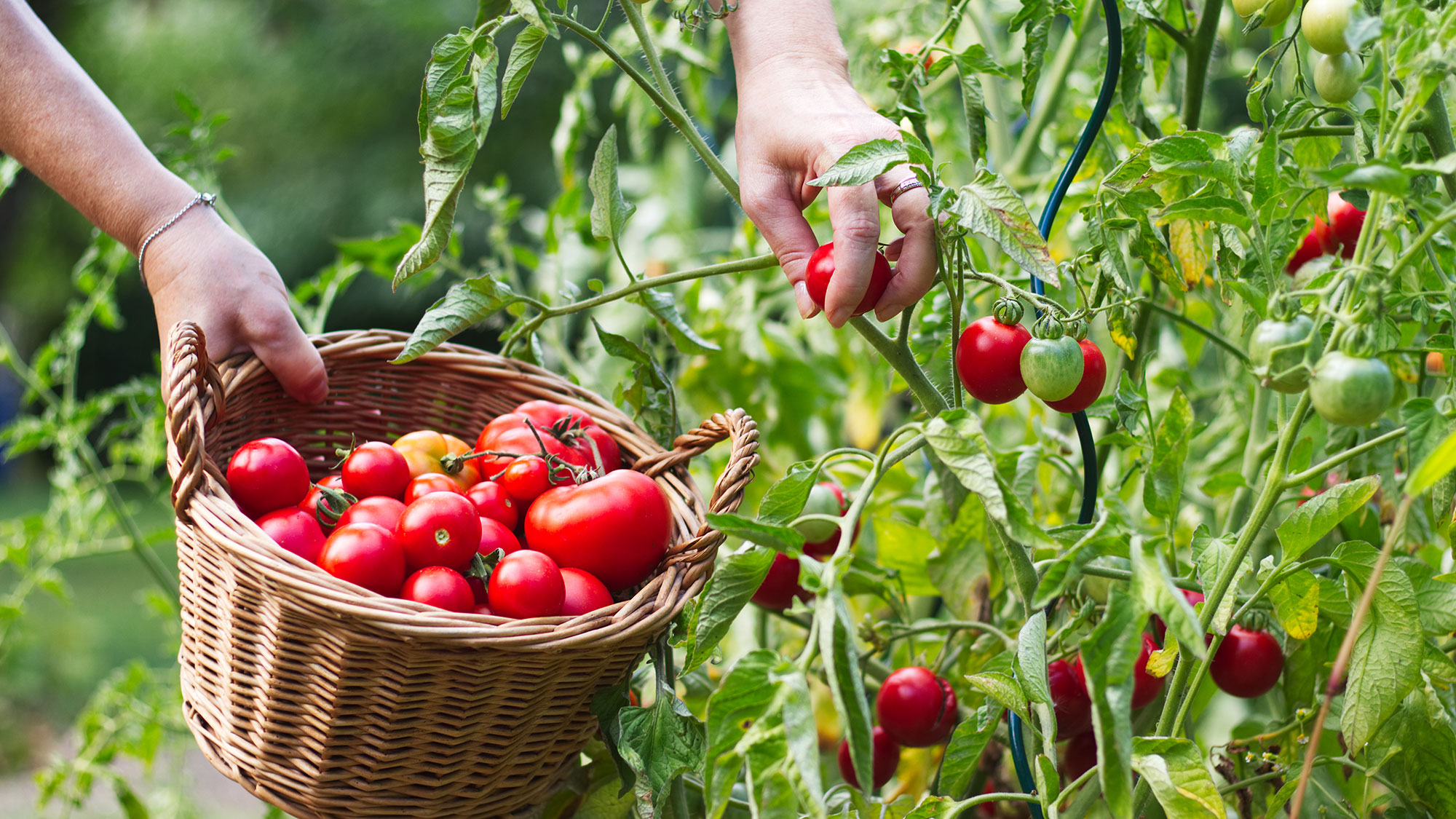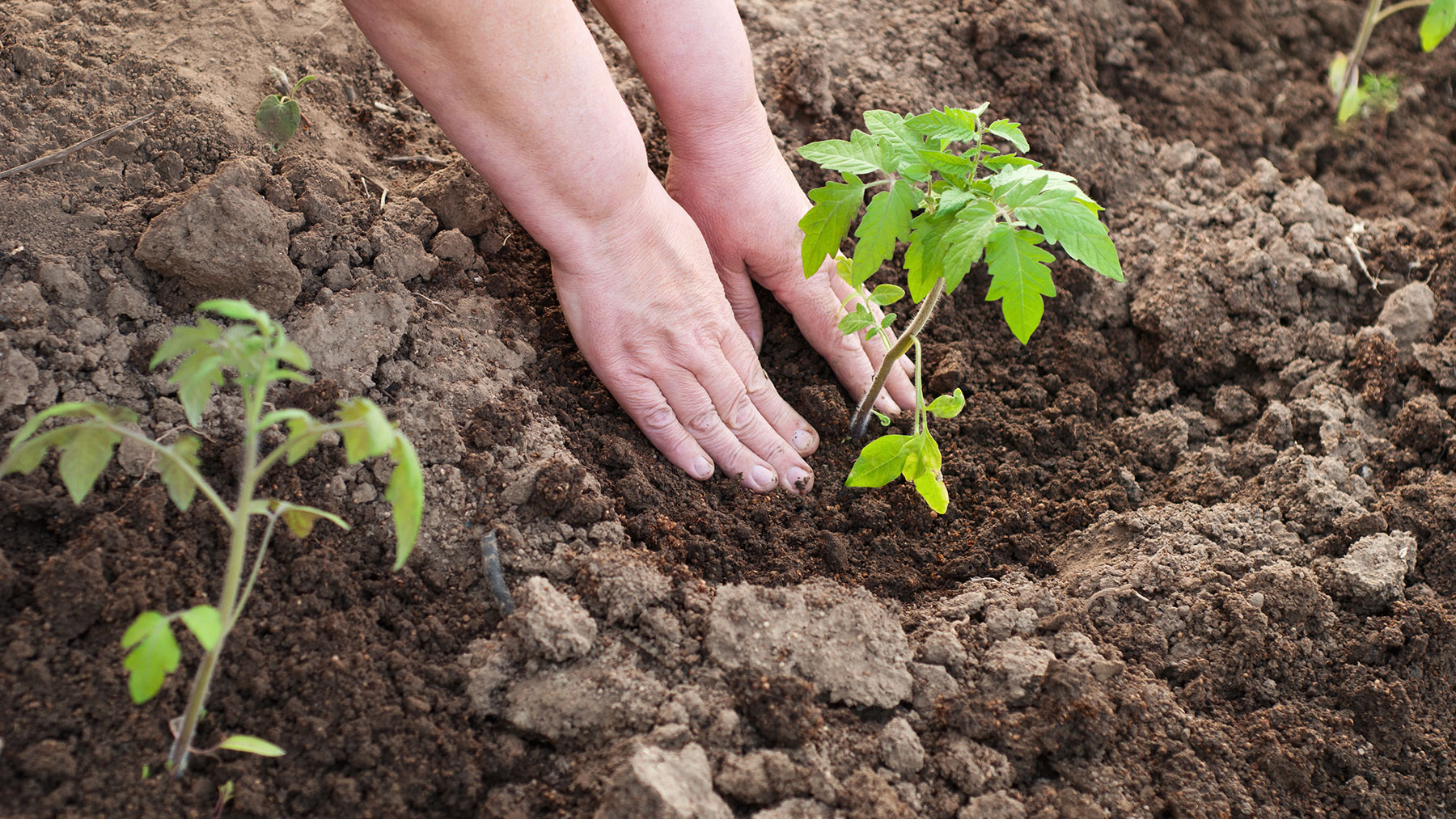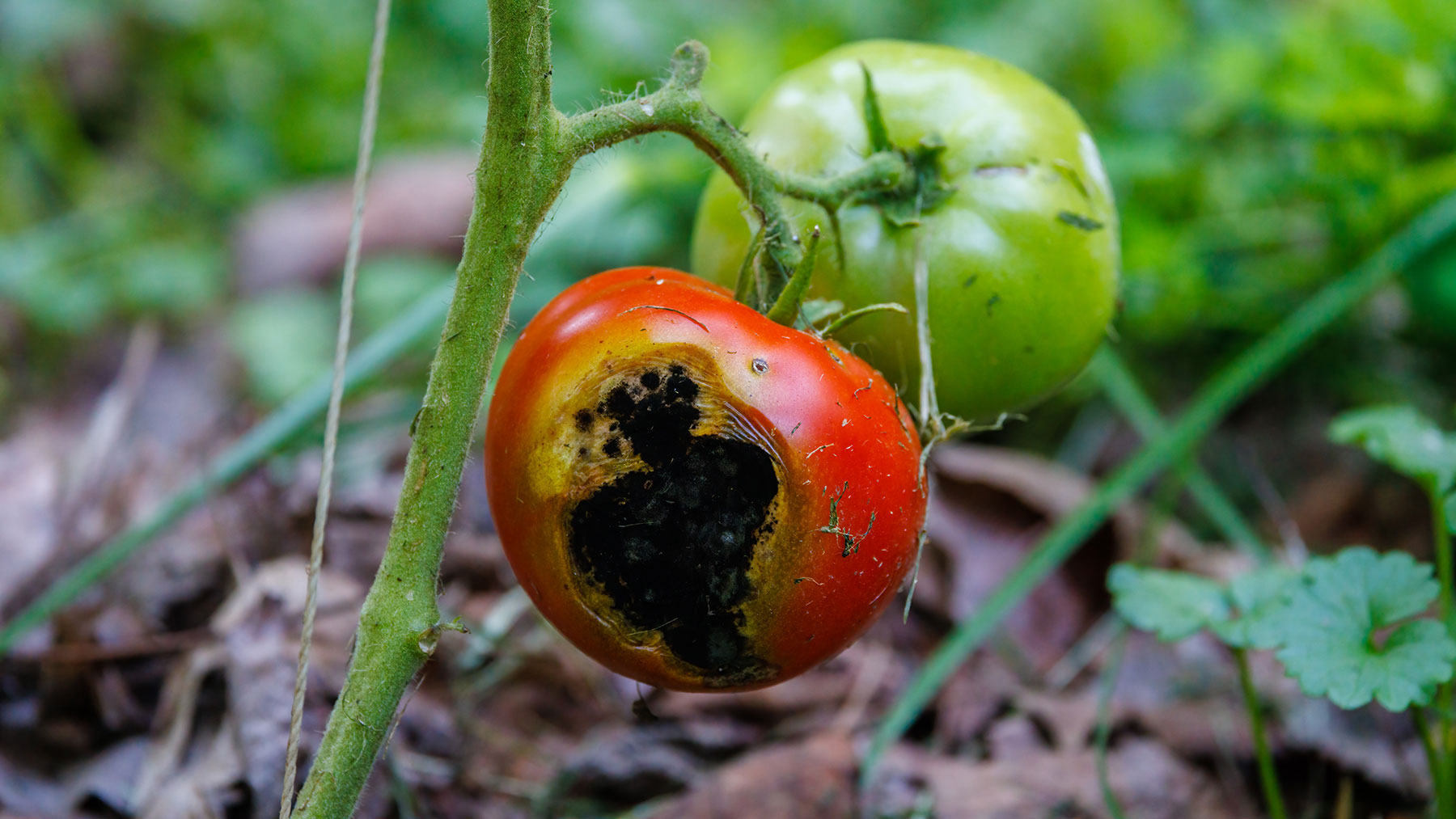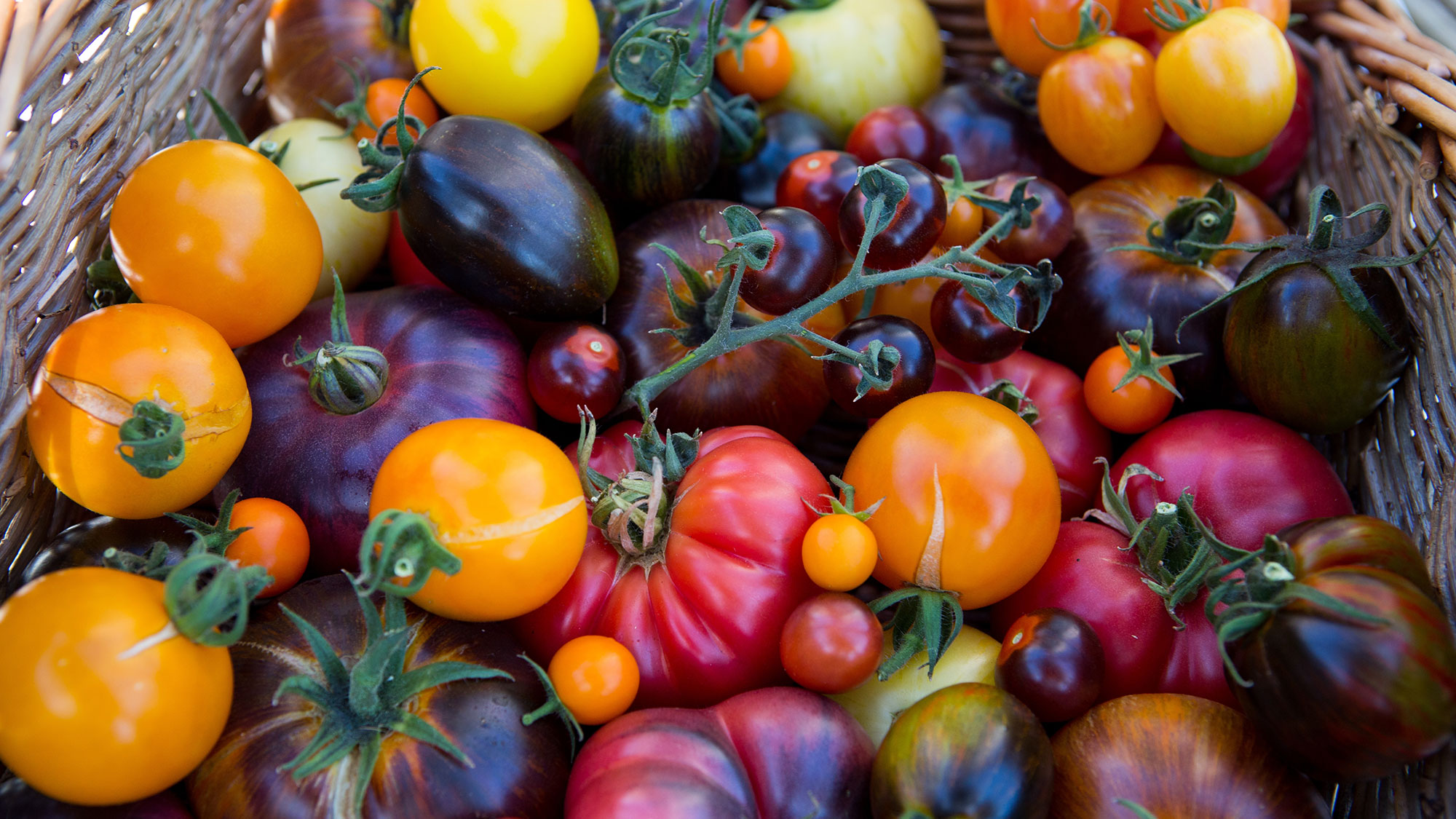
Knowing when to harvest tomatoes is key to enjoying your homegrown crop at its most flavorsome. Having spent time nurturing your tomato plants to achieve an abundant crop by following top tips on how to get more fruits from a tomato plant and the best ways to trellis tomatoes, you’ll want to ensure you pick your tomatoes at the best time to ensure all our hard work is rewarded with a crop that is tasty and nutritious.
Despite being able to enjoy tending to your tomatoes and watching them grow, the most satisfying part is in the eating, as tomatoes are the true taste of summer — sweet, succulent with a rich, deep flavor. And they can be harvested at different times of ripeness, enjoyed fresh from the vine or picked and left to ripen.
Here, with the help of Carrie Spoonemore, co-creator at Park Seed's From Seed to Spoon app, we share the three key signs to look out for to know when tomatoes are ready to harvest, along with the best way to pick them.
The ripening process

Tomatoes begin to ripen when they reach full size and become pale green in color. Tomatoes’ ripening and colour development is based on temperature and ethylene — a naturally occurring chemical. According to the Purdue Extension Service for Home Gardeners, the optimal temperature for ripening is 68°F-77°F. If this is lower, the ripening process will be delayed. Extreme heat can also cause a problem, as tomatoes don’t produce lycopene and carotene — the pigments responsible for the ripe tomato color — when the temperature goes above 85°F.
When are tomatoes ready to harvest?

With more than 10,000 varieties of tomatoes available, you might wonder when your homegrown variety is ready to harvest. However, despite such a wide choice of tomatoes — from yellow, orange, pink, purple and green to the humble red — it’s not as complex as it may seem. In fact, there are three signs you can look out for.
1. Color
Depending on their variety, Spoonemore says, “Tomatoes are ready for harvest when they have fully developed color and are slightly soft to the touch.”
2. The squeeze test
Tomatoes ripen from the bottom up, so to judge when they are ready to pick, give their bottoms a slight squeeze. If the base of the tomato feels hard, it’s not ready to pick, so leave them on the vine for a while longer.
3. Easy pickings
Another sign is how easily tomatoes come off the vine. If a tomato is easy to pick, it’s a clear indicator that it’s ripe, while if there’s more resistance, it’s under-ripe.
Do you have to wait for tomatoes to turn a perfect color?

Rather than waiting for your tomatoes to reach the perfect ripe color, Spoonemore suggests that you start harvesting them when they begin to ‘break color’ and then allow them to ripen on a counter or a sunny windowsill.
This ripening stage is often called the ‘breaker stage’ when the fruit is about half green and half pink. Picking tomatoes at this stage will not hinder their flavor, quality, or nutrition.
But why does it help to pick the tomatoes early? “Tomatoes left to fully ripen on the vine generally have a shorter shelf life because they are more susceptible to bruising, overripening, and decay as they have reached their peak ripeness and begun the natural deterioration process,” she explains.
So, if you do pick them when they are fully ripe, the best option appears to be to ensure you can eat and enjoy them in good time before they start to deteriorate.
When is the best time of day to harvest tomatoes?

If you like your tomatoes picked at their best, you’ll have to be an early bird. Spoonemore says, “The best time to harvest tomatoes is in the morning when the temperatures are cooler, and the fruit is less likely to be stressed by the heat.”
At this early point in the morning, the sun has yet to warm up and dry out the fruits.
How should you remove tomatoes from the vine?

Once tomatoes are ripe, you should be able to remove them from the vine with a gentle twist. Hold the fruit in one hand and twist it until the vine breaks. Try to keep the top leaf attached to the tomato as well as part of the stalk.
Alternatively, you can use garden snips or pruning shears.
Top tip
Always ensure your garden snips or best pruning shears are clean and sharp when cutting, ensuring the plant is protected from any diseases being transferred. Discover how to sharpen pruning shears and how to clean pruning shears.
How long do tomatoes take to mature?

One way of working out when tomatoes will be ready to pick is to know how long they take to grow. Spoonemore explains that the time to maturity will depend on the variety you are growing, but as a guide, they should typically take 60-85 days to mature from transplanting to harvest.
However, there are some other factors to consider. “The time to maturity can be influenced by the planting zone. Warmer zones with longer growing seasons can support faster growth and earlier maturity, while cooler zones might require more time, or necessitate starting plants indoors to ensure they reach maturity within the growing season,” she adds.
How does the weather affect ripening?

Although knowing the time it takes for tomatoes to reach maturity will give you a good indication of when they will be ready to harvest, the weather can play a part.
“Weather significantly affects tomato ripening,” says Spoonemore, “Warm, consistent temperatures accelerate ripening, while wet and cool weather can slow it down or cause uneven ripening.”
She also warns that excessively wet weather can promote diseases, such as tomato blight, while dry weather can encourage tomato blossom end rot — both of which can damage your crop.
Cool weather can also delay ripening, resulting in tomatoes that stay green for longer and potentially lead to a late or reduced harvest.
I’m experiencing these problems with my small crop of tomatoes in the U.K. The weather has been particularly mild and wet this year and my tomatoes are taking much longer to mature than expected.
What if my tomatoes aren't red?

Apart from visual and color clues, we can use a few other senses to check for a tomato’s ripeness. “Smelling the tomato can help,” says Spoonemore, “Ripe tomatoes often have a strong, sweet fragrance. Additionally, the tomato should feel firm but yield slightly to gentle pressure.”
If you are growing yellow, orange, pink, green, or purple tomatoes, she advises checking the typical color of the variety when ripe. This way, you’ll have a clearer idea of what to look out for to ensure you harvest your tomatoes at the optimal time.







